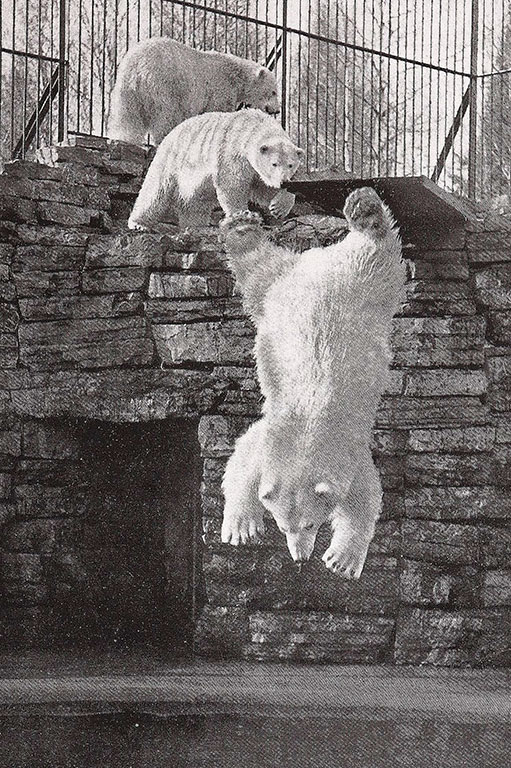Polar Opposites

A chilling painting by the English artist Edwin Landseer depicts the aftermath of Sir John Franklin’s tragic 1845 expedition in search of the Northwest Passage. Man Proposes, God Disposes, painted in 1864, features two polar bears tearing apart remains of a ship and its crew.

This is a stark contrast to the cute, playful bears portrayed in popular media and children’s stuffed toys. The polar bear today both fascinates and terrifies people.
“To catch even a fleeting faraway glimpse of a polar bear among the distant ice floes is to experience a quickening of the pulses and a surge of adrenalin that nothing else — unless perhaps a sudden confrontation with a grizzly in his mountain haunts — can quite match,” wrote Clarence Tillenius in “Monarch of the Arctic” (The Beaver, August-September 1989).
In past issues of The Beaver there are stories about violent polar bear confrontations, but there are also stories about polar bears who “became great pals” with people.
For example, “Buddy, the Polar Bear” (The Beaver, March 1934) tells of a bear that slept at the foot of the bed of his human friend, W.O. Douglas, and howled when left alone for a moment, until Douglas returned.
Known as Nanuq or Pihoqahiak, the polar bear is highly respected in Inuit culture, according to Polar Bears International. Legend has it that the mammal decides whether or not a hunter deserves success. Other stories feature animals that are part man, part polar bear who walk upright, talk, and live in igloos.

At Canada’s History, we highlight our nation’s past by telling stories that illuminate the people, places, and events that unite us as Canadians, while understanding that diverse past experiences can shape multiple perceptions of our history.
Canada’s History is a registered charity. Generous contributions from readers like you help us explore and celebrate Canada’s diverse stories and make them accessible to all through our free online content.
Please donate to Canada’s History today. Thank you!
Themes associated with this article
Advertisement









